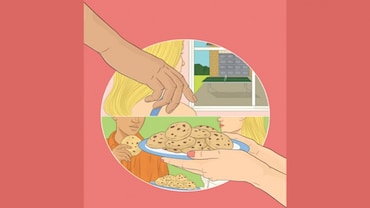- HOME
- /
- Better Living
- /
- Food
- /
Our Daily Bread
A top nutritionist tells you how to buy and eat it right

NOT SO LONG AGO there were worrying reports of harmful chemicals that were found in bread. It isn't something you can stop buying; in fact, it is amongst those convenience foods that most of us consume on a daily basis. Let's take a long, hard look at bread-going beyond the alarming headlines-and understand the basics.
First off, wholegrain or multigrain breads (without artificial colouring) are clear winners, and are best picked over white breads. Unless fortified, white bread is devoid of nutrients. It is prepared from bleached flour (maida), which is highly refined. What's more, the milling and bleaching partially remove the germ (the nutrient-rich part of the grain) and the bran (the fibre-rich part), leaving mainly the starch-rich endosperm. This leads to the loss of more than 22 important nutrients such as fibre, vitamins and minerals. Hence, avoid white bread at all costs.
Buy whole, not brown
You may think 'brown bread' is safe. However, you should make sure you pick wholegrain varieties-that provide two or three grams of fibre per slice-rather than a refined-flour loaf that has been coloured.
Anything darker than a roti is likely to have added caramel or artificial colouring. Ask for whole wheat (not brown) if you want atta bread and avoid refined flour ones (maida) with added colour.
Bread labelled 'whole wheat' must have 100 per cent whole wheat as the first-listed ingredient. Bread simply labelled 'wheat' or 'cracked wheat' often contains 0.94 per cent white flour as the major ingredient. If brown or wholewheat bread is soft and light, it is unlikely to have a high quantity of wholewheat flour. Bread labelled 'multigrain' may simply mean that it contains mainly refined wheat flour with small amounts of oatmeal or whole wheat. The label should indicate whether caramel colouring has been added to give the bread a more wholesome appearance. Other ingredients that the bread industry uses are sugar, bran, milk, oil, emulsifiers, bread improvers and preservatives.
Decoding the label
Potassium bromate or iodate is commonly used to improve the texture and volume of bread. However, owing to their safety concerns, several countries in the European Union have banned the use of potassium bromate. In India, the Food Safety and Standards Authority of India (FSSAI), through a notification, removed potassium bromate from the list of approved additives and banned its use across the country. It proposes to ban potassium iodate soon. These additives have been classified as possible carcinogens in humans when taken above permissible levels by expert committees from the WHO and FAO.
If you or your family are diagnosed with gluten sensitivity (coeliac disease or non-coeliac) you should look out for gluten-free bread. Another good option would be to pick bread made with grains that are naturally gluten-free. You could try traditional fare, such as millets, amaranth and ragi, or exotic ones, like buckwheat, red rice, spelt, kamut or teff, if they are available in stores near you.
The best complex carbs
Current recommendations specify obtaining 45 to 50 per cent of daily calories from complex carbs. The good news is that bread is one of the best sources of complex carbohydrates. When bread is made from low-glycemic index (GI) ingredients, like oats, nuts, bran, soy and pulses, it helps control blood sugar and body weight. People who have diabetes or are trying to lose weight should opt for them as they digest slowly to form simple sugar (glucose). The slow rise in blood sugar requires a modest output of the hormone insulin to regulate blood sugar and fat levels. This also helps in keeping you full for longer.
Eating wholegrain bread smeared with butter, lean meat or cheese reduces its glycemic index and gives us metabolic advantage.
Make bread healthier
1. Ditch the margarine. Avoid it as most brands have harmful transfats. Choose mint chutney, extra-virgin olive oil or hummus to go with warm, fresh wholegrain bread.
2. Try open sandwiches. It's smarter to load up on healthy toppings rather than fill up on bread. Take a single slice of bread and top it up with wholesome ingredients such as raw vegetables, and sprinkle with a seed and nut mix.
3. Rainy season snack. If you simply love butter, try this occasionally: Toast the bread and smear it lightly with butter and top it with a touch of warm honey and a pinch of cinnamon powder.
Ishi Khosla is a clinical nutritionist, founder of Whole Foods India, founder president of Celiac Society of India and director of www.theweightmonitor.com.
ADAPTED FROM PREVENTION INDIA.copyright MARCH 2010 LIVING MEDIA INDIA LIMITED.






